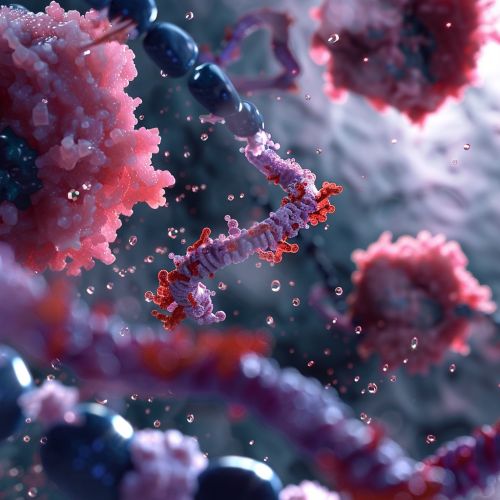RNA Therapeutics
Introduction
RNA therapeutics is a rapidly evolving field of medicine that utilizes the molecular biology of ribonucleic acid to treat a wide range of diseases. This form of therapy primarily involves the use of RNA molecules as therapeutic agents. RNA therapeutics has the potential to treat a variety of diseases that are currently considered untreatable.


Overview of RNA
RNA, or ribonucleic acid, is one of the three major biological macromolecules that are essential for all known forms of life. It is a polymeric molecule, which means it is made up of smaller units called nucleotides. Each nucleotide is composed of a nitrogenous base, a ribose sugar, and a phosphate group. RNA is single-stranded and can fold into complex three-dimensional structures.
RNA plays a crucial role in coding, decoding, regulation, and expression of genes. It acts as a messenger between DNA and the protein synthesis complexes known as ribosomes, in a process known as protein biosynthesis. This involves two major steps: transcription and translation.
RNA Therapeutics: An Overview
RNA therapeutics involves the use of RNA molecules to treat diseases. This can be achieved through several mechanisms, including RNA interference (RNAi), antisense technology, aptamers, and mRNA therapy.
RNA Interference
RNAi is a biological process in which RNA molecules inhibit gene expression or translation, by neutralizing targeted mRNA molecules. RNAi is used in research as a method to silence genes and is being developed as a therapeutic approach to silence genes that contribute to disease.
Antisense Technology
Antisense technology involves the use of short DNA or RNA molecules to halt the production of specific proteins. These antisense molecules bind to the mRNA produced by specific genes and prevent them from serving as templates for protein production.
Aptamers
Aptamers are short, single-stranded DNA or RNA molecules that can bind to specific target molecules. Aptamers are selected from a large pool of random sequences, and the ones with high affinity for the target molecule are amplified and used for therapeutic purposes.
mRNA Therapy
mRNA therapy involves the use of synthetic mRNA to cause cells to produce proteins that can have a therapeutic effect. This approach has been used to develop vaccines for diseases such as COVID-19.
Applications of RNA Therapeutics
RNA therapeutics has a wide range of applications in the treatment of various diseases. These include cancer, genetic disorders, infectious diseases, and cardiovascular diseases.
Cancer
RNA therapeutics can be used to target specific genes that contribute to the growth and spread of cancer cells. This can be achieved through RNAi or antisense technology.
Genetic Disorders
RNA therapeutics can be used to correct genetic mutations that cause diseases. This can be achieved by using RNA molecules to alter the expression of the mutated gene or to introduce a correct copy of the gene.
Infectious Diseases
RNA therapeutics can be used to fight infectious diseases by targeting the genetic material of the pathogen. This can be achieved through RNAi or antisense technology.
Cardiovascular Diseases
RNA therapeutics can be used to treat cardiovascular diseases by targeting genes that contribute to these conditions. This can be achieved through RNAi or antisense technology.
Future of RNA Therapeutics
The future of RNA therapeutics is promising, with numerous clinical trials underway to test the efficacy of RNA-based treatments for a variety of diseases. As our understanding of RNA biology continues to grow, so too will the potential applications of RNA therapeutics.
